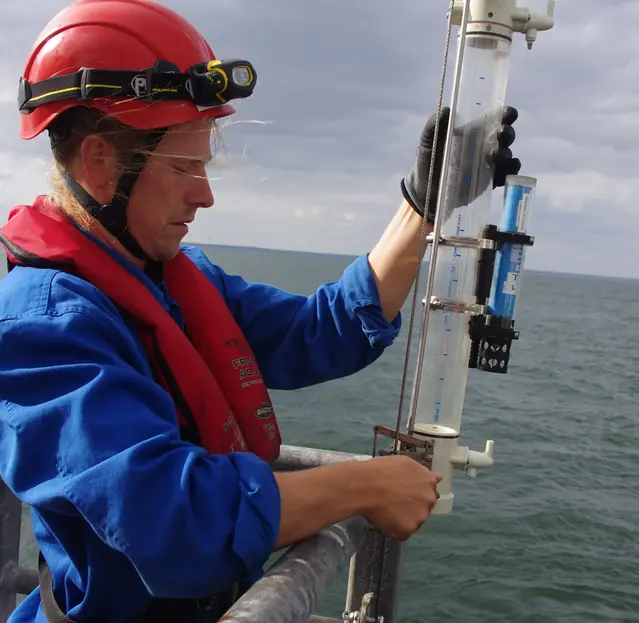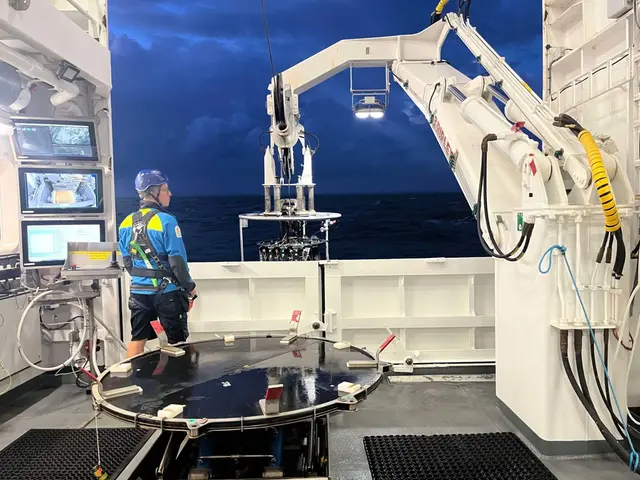What does an oceanographer do at SMHI?
An oceanographer at SMHI works on many important issues related to the sea and our coasts. At SMHI, oceanographers are involved in everything from measurements at sea to developing advanced computational models. Oceanographers also conduct various investigations, consultancy assignments, and support rescue services and authorities during coastal flooding and maritime accidents.
There are many oceanographers at SMHI with various areas of expertise in physical, chemical, and biological oceanography. Oceanographers are involved in all areas at SMHI, including measurement activities, consultancy services, research, model development, as well as forecasting and warning services.
Below, you can explore some of the important tasks that our oceanographers work on.
Monitoring our seas
Every day, SMHI monitors water levels along our coasts and in sensitive waterways. We receive observations from across the country and from international partners. These, combined with our forecasting models, form the basis for the work of our on-duty oceanographers.
As an on-duty oceanographer, you are responsible for issuing warnings at sea and along our coasts. When forecasts indicate the risk of very low or high water levels or ice formation on vessels at sea, warnings are issued. Much of this work is done in close collaboration with SMHI's on-duty meteorologists and hydrologists.
The on-duty oceanographer also supports essential community functions, such as rescue services, municipalities, county administrative boards, or other authorities during severe conditions at sea.
During winter, SMHI's ice service monitors the ice situation in the Baltic Sea, Lake Mälaren, and Lake Vänern. Ice experts analyse daily ice coverage using satellite images and collected observations. The analysis is presented in the form of descriptive maps and reports and is available to maritime traffic, the public, and cooperating authorities. The ice service also provides expert knowledge for investigations or for commercial customers needing information about sea ice.

Observations
Observations are one of the most crucial elements of SMHI’s operations. Oceanographic measurements have been conducted in Sweden for a long time; for example, Stockholm is considered to have one of the world’s longest time series for water levels.
Oceanographic observations are used daily within the forecasting and warning services to monitor the current state of the sea. Observations are also used to study the climate and track changes in the marine environment. SMHI is responsible for measuring various parameters at sea. Some data are collected in real-time from buoys or coastal stations, while other parameters require water sampling. These measurements are conducted monthly as part of marine environmental monitoring, using the research vessel R/V Svea. At SMHI’s office in Gothenburg, there is an accredited laboratory for analysing the samples collected at sea.
SMHI also has experts in the analysis of phytoplankton, known as planktonologists, who use microscopy to provide insights into the health of the oceans. These organisms are foundational to the marine food web and play a key role in understanding the impact of climate change on marine ecosystems.

Data
Directly related to the measurement and collection of observations, SMHI’s role as the National Oceanographic Data Centre (NODC) and national data steward for oceanography and marine biology is central. Oceanographers at SMHI managing data play a crucial role in increasing societal benefit by ensuring that quality-controlled data is available both nationally and globally. This data is essential for improving our understanding of the marine environment, supporting decision-making, and promoting sustainable development along our coasts and seas.
Research
Many oceanographers at SMHI are involved in research and development. The field of oceanographic research connects physical and biogeochemical processes in the ocean with other processes in our environment. Research at SMHI primarily focuses on the seas surrounding Sweden, but also includes some work on the Arctic Ocean and the North Sea.
Oceanographic research is divided into four main areas:
- Ocean Climate
- Marine Environment
- Ocean Processes
- Operational Oceanographic Research
A significant portion of oceanographic research involves various types of numerical models and observations used to make forecasts, study different processes, or predict future marine climates.
Much of the oceanographic research is conducted in collaboration with other institutes, authorities, or universities. This research contributes to increased knowledge and societal benefits, and the services and data provided by SMHI are based on scientific methods.

Consulting
In SMHI’s consulting activities, our oceanography experts support clients with both small and large projects within the public sector and industry. This can range from large measurement projects where instruments are deployed at sea and data is collected for analysis, to investigations and statistical calculations based on model data or historical observations.
Assignments may include, for example, providing data for new or renovated construction near water where ice conditions, sea water levels, wave, and current conditions can have significant impacts. Oceanographers can also assist with environmental impact assessments, permit applications, and climate adaptation measures along the coast and at sea.
